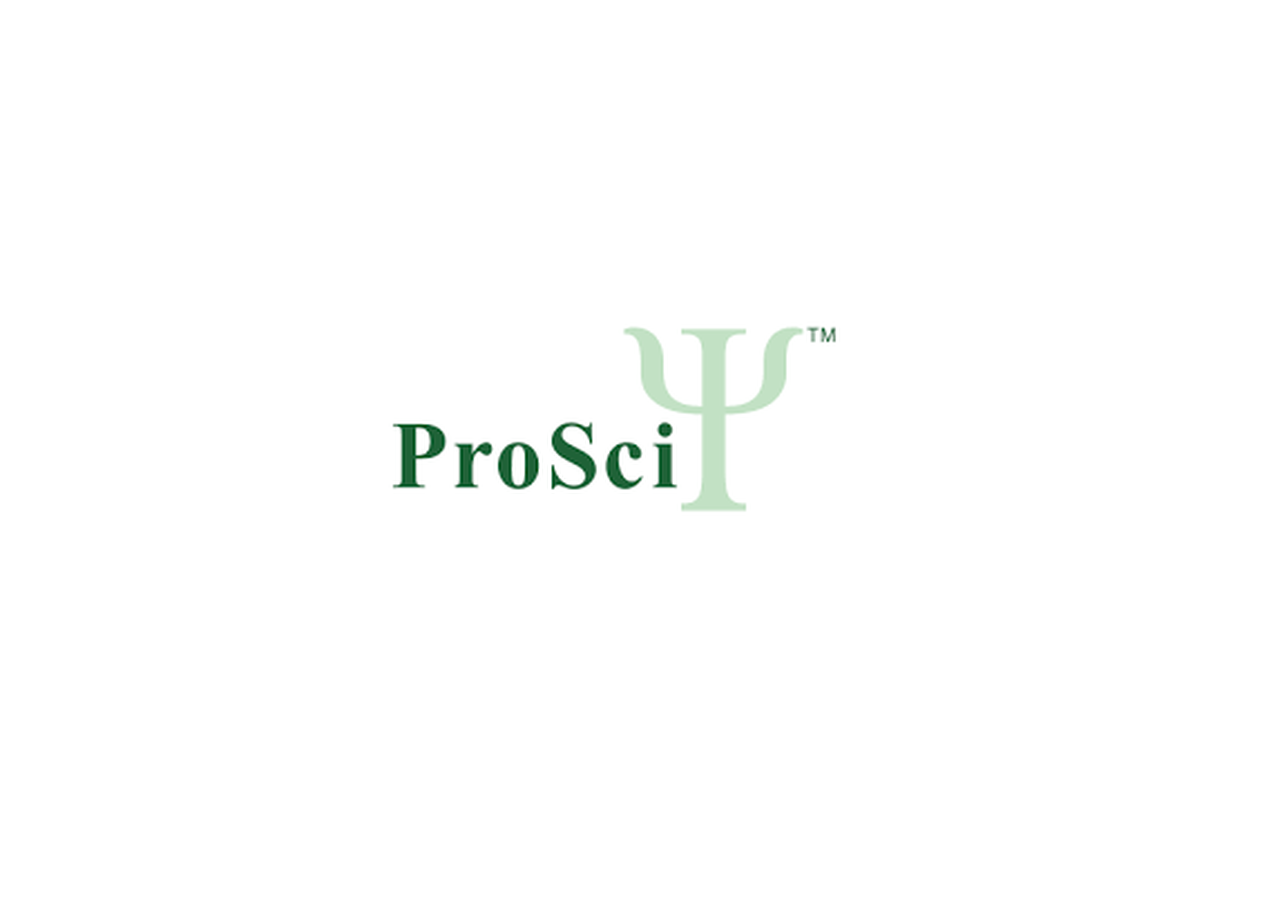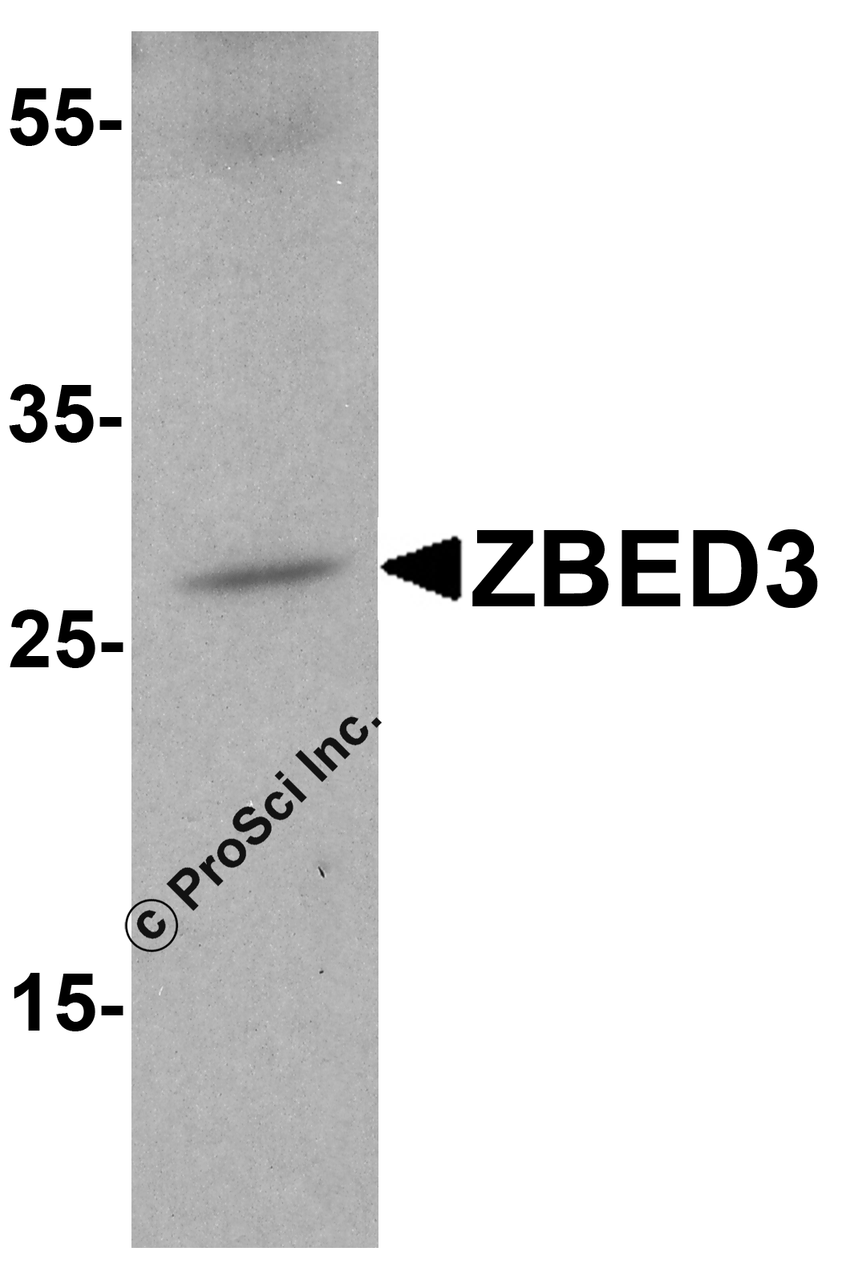Product Description
ZBED3 Antibody | 5123 | ProSci
Host: Rabbit
Reactivity: Human, Mouse, Rat
Homology: N/A
Immunogen: ZBED3 antibody was raised against a 17 amino acid synthetic peptide from near the amino terminus of human ZBED3.
The immunogen is located within the first 50 amino acids of ZBED3.
Research Area: Homeostasis
Tested Application: E, WB
Application: ZBED3 antibody can be used for detection of ZBED3 by Western blot at 1 - 2 μg/mL. Despite its predicted molecular weight, ZBED3 often migrates at a higher position in SDS-PAGE.
Antibody validated: Western Blot in mouse samples. All other applications and species not yet tested.
Specificiy: This antibody is predicted to have no cross-reactivity to ZBED1 or ZBED2.
Positive Control 1: Cat. No. 1288 - A20 Cell Lysate
Positive Control 2: N/A
Positive Control 3: N/A
Positive Control 4: N/A
Positive Control 5: N/A
Positive Control 6: N/A
Molecular Weight: Predicted: 26 kDa
Observed: 28 kDa
Validation: N/A
Isoform: N/A
Purification: ZBED3 Antibody is affinity chromatography purified via peptide column.
Clonality: Polyclonal
Clone: N/A
Isotype: IgG
Conjugate: Unconjugated
Physical State: Liquid
Buffer: ZBED3 Antibody is supplied in PBS containing 0.02% sodium azide.
Concentration: 1 mg/mL
Storage Condition: ZBED3 antibody can be stored at 4˚C for three months and -20˚C, stable for up to one year. As with all antibodies care should be taken to avoid repeated freeze thaw cycles. Antibodies should not be exposed to prolonged high temperatures.
Alternate Name: ZBED3 Antibody: Zinc finger BED domain-containing protein 3, Axin-interacting protein
User Note: Optimal dilutions for each application to be determined by the researcher.
BACKGROUND: ZBED3 Antibody: Axin is a key modulator of the Wnt/beta-catenin pathway and acts as a scaffold protein in phosphorylating and degrading cytoplasmic beta-catenin. ZBED3, a member of the Zinc finger BED-type domain containing superfamily, has been recently identified as an Axin-interacting protein and has been suggested to modulate the Wnt/beta-catenin signaling pathway. RNA interference (RNAi) experiments targeting ZBED3 RNA attenuated Wnt-induced beta-catenin accumulation, lymphoid enhancer binding factor-1-dependent luciferase reporter activity, and Wnt gene expression.
 Euro
Euro
 USD
USD
 British Pound
British Pound
 NULL
NULL










